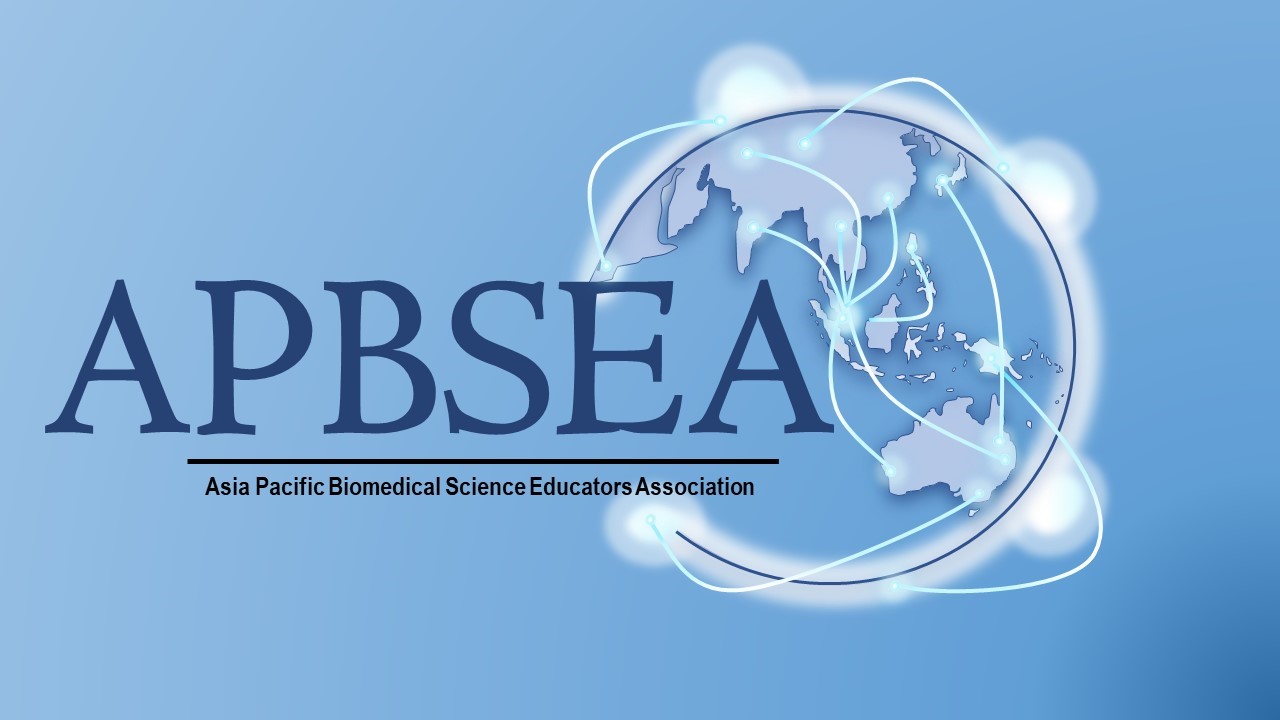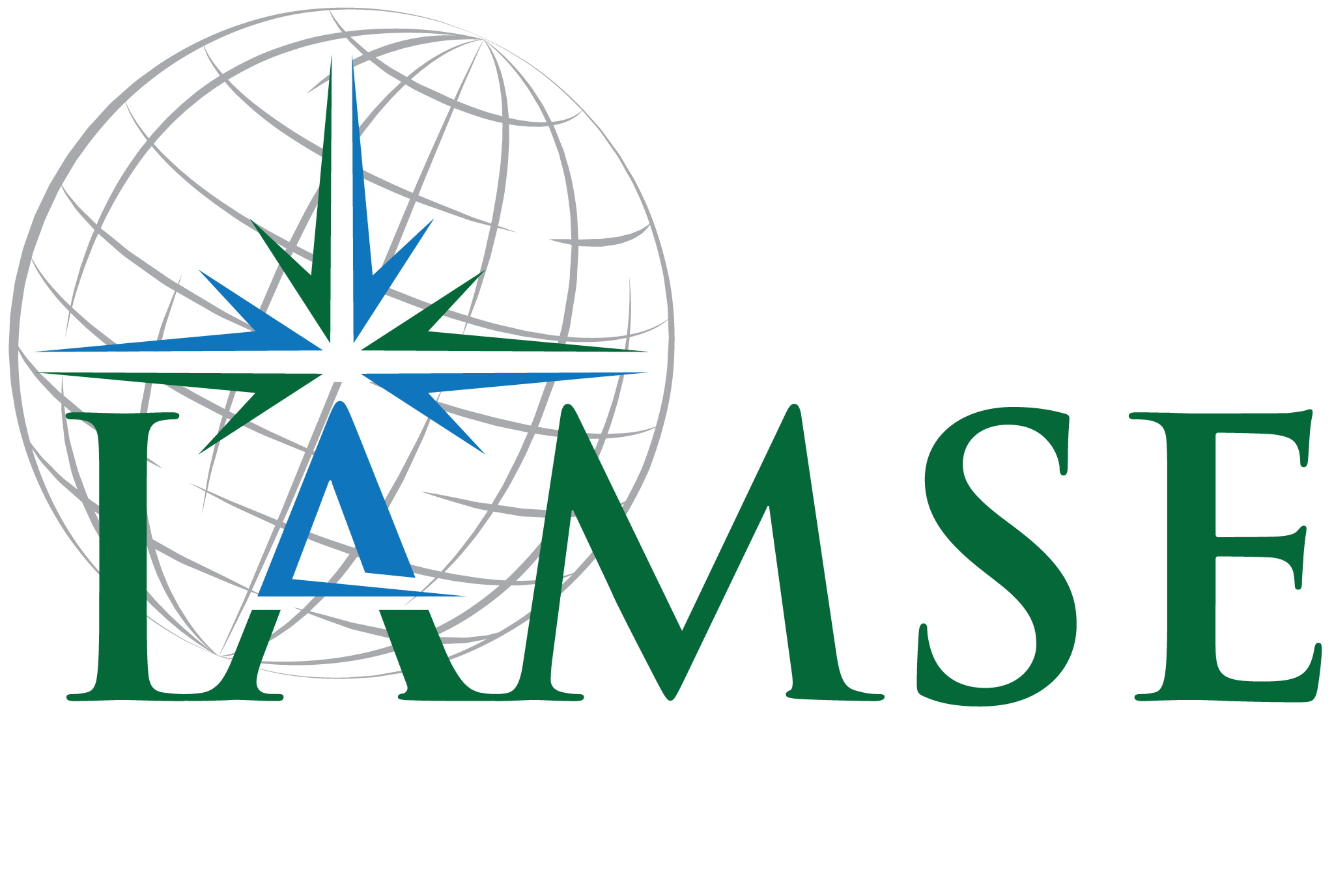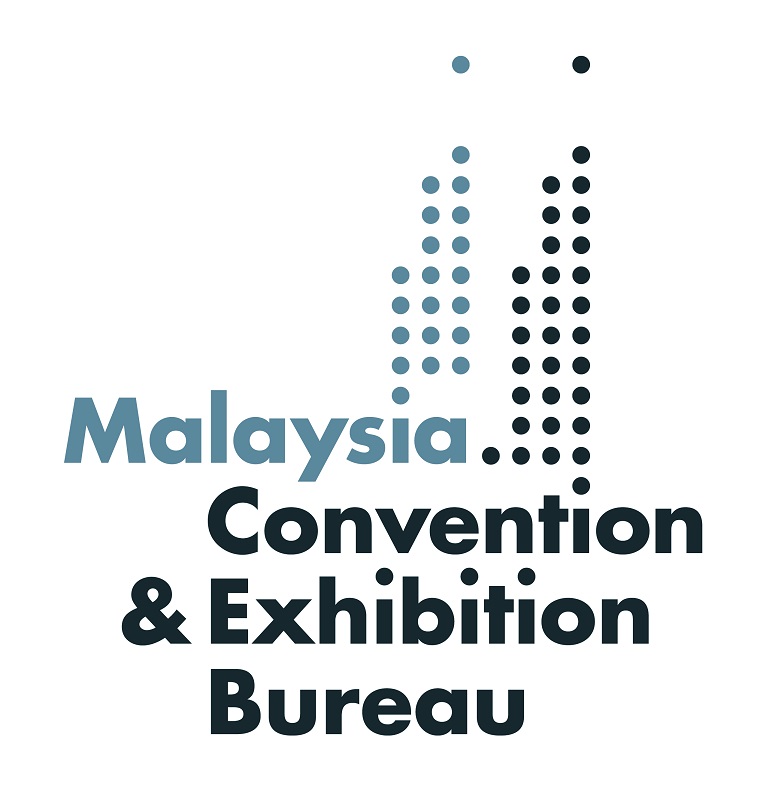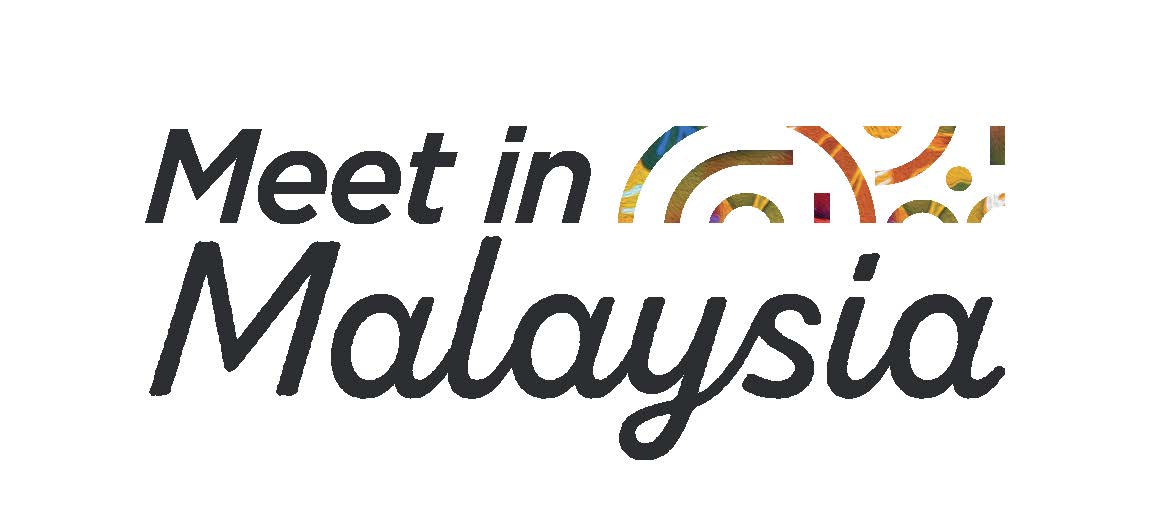CONFERENCE PROGRAMME
Pre-Conference
Day 1Friday, 4 Oct 2024- 09:00AM - 12:00PMPre-Conference Workshop - P1a (Onsite)
Title: Innovative Strategies to Enhance Student Engagement with One Health in Competency-Based Medical Education - Plans & Perspectives of Educators Vs Students
Facilitators: Mohan Surapaneni (India), Jyotsna Needamangalam Balaji (India), Russel D'Souza (Australia), Mary Mathew (India)
Moderator: Sunil Pazhayanur Venkateswaran
Venue: IMU University Bukit Jalil CampusPre-Conference Workshop - P1b (Onsite)
Title: Moving From Policy to Practice to Tackle Microaggressions
Facilitators: Joanne Selway, Jacqueline O’Dowd (United Kingdom)
Moderator: Muneer Gohar Babar
Venue: IMU University Bukit Jalil CampusPre-Conference Workshop - P1c (Onsite)
Title: Global Health Professionals in 2030: Building Your Center of Excellence
Facilitators: Avinash Pathengay, Snigdha (India), Chen Zhi Xiong (Singapore)
Moderator: Fabian Davamani Amalraj
Venue: IMU University Bukit Jalil CampusPre-Conference Workshop - P1d (Onsite)
Title: Do We Need OSCE to Show Competency of Novice to Mastery?
Facilitators: Kavitha Nagandla, Sharifah Sulaiha Syed Aznal, Malanashita Ganeson, Brinnell Annette, Clarence Kavetha (Malaysia)
Moderator: Megan Chong
Venue: IMU University Bukit Jalil CampusPre-Conference Workshop - P1e (Onsite)
Title: How to Use Generative AI to Transform Health Professions Education for the Advancement of One Health
Facilitators: Weeming Lau (Malaysia), Andrew Tagg (Australia)
Moderator: Pathiyil Ravi Shankar
Venue: IMU University Bukit Jalil CampusPre-Conference Workshop - O1a (Online)
Title: Transcending Boundaries: Integrating One Health for Holistic Patient Wellness - Enhancing Clinical Skills
Facilitators: Sara Shakil, Iffat Khanum, Kiren Habib (Pakistan)
Moderator: Bhavani Veasuvalingam
Venue: OnlinePre-Conference Workshop - O1b (Online)
Title: Rigor Rises: A Medical Education Research Odyssey
Facilitators: Syeda Hanaa Fatima, Naushaba Sadiq (Pakistan)
Moderator: Sasikala Devi Amirthalingam
Venue: Online - 12:00PM - 01:45PMLunch Break
Venue: Open Area 1, Level 1, IMU University Bukit Jalil Campus - 01:00PM - 02:00PMIMU Clinical Skills and Simulation Centre & Medical Museum Tour
Venue: Clinical Skills and Simulation Centre (CSSC), Level G, IMU University Bukit Jalil Campus - 02:00PM - 05:00PMPre-Conference Workshop - P2a (Onsite)
Title: Developing Interdisciplinary Programs in Integrative Health
Facilitators: Amanda Huee-Ping Wong, Long Yun Chau, Zhi Xiong Chen, Ivan Low Cherh Chiet (Singapore)
Moderator: Kavitha Nagandla
Venue: IMU University Bukit Jalil CampusPre-Conference Workshop - P2b (Onsite)
Title: Leveraging AI Tools and Technologies for Digital Health Education
Facilitators: Gunasekar Thangarasu, Fabian Davamani Amalraj, Tan Ee Xion (Malaysia)
Moderator: Pathiyil Ravi Shankar
Venue: IMU University Bukit Jalil CampusPre-Conference Workshop - P2d (Onsite)
Title: ‘It’s Not My Fault’- Attribution Theory in Healthcare Professionalism Assessment
Facilitators: Dominic Johnson (United Kingdom)
Moderator: Juliet Mathew
Venue: IMU University Bukit Jalil CampusPre-Conference Workshop - P2e (Onsite)
Title: Interprofessional Team Building in One Health Landscape Through Gamification
Facilitators: Rabia Aftab, Aliya Ahmed, Shaur Sarfaraz, Aun Ali (Pakistan)
Moderator: Sow Chew Fei
Venue: IMU University Bukit Jalil CampusPre-Conference Workshop - O2a (Online)
Title: Effective Communication in Multicultural Health Care Environment; Empowering the One Health System
Facilitators: Magda Ahmed Wagdy Youssef, Manasik Hassan (Qatar)
Moderator: Thiba Rajoo
Venue: OnlinePre-Conference Workshop - O2b (Online)
Title: Designing the Future of One Health Education: An Interdisciplinary Challenge
Facilitators: Melvyn Quan, Heleen Roos, Sean Patrick, Sumaiya Adam (South Africa)
Moderator: Ebenezer Chitra
Venue: Online - 06:00PM - 09:00PMDinner (By Invitation)
Main Conference
Day 2Saturday, 5 Oct 2024- 08:00AM - 10:30AMRegistration
Venue: Foyer, Level 4, IMU University Bukit Jalil Campus - 09:30AM - 10:30AMOral Presentation Session 1 (Online)
Venue: IMU University Bukit Jalil Campuse-Poster Presentation Session 1 (Online)
Venue: IMU University Bukit Jalil Campus - 10:30AM - 11:30AMOral Presentation Session 2
Venue: IMU University Bukit Jalil Campus - 10:30AM - 11:30PMe-Poster Presentation Session 2
Venue: IMU University Bukit Jalil Campus - 11:30AM - 12:00PMNetworking & Visit Sponsor Page / Exhibition Booths
Venue: Dewan Chancellor & Open Area, Level 4, IMU University Bukit Jalil Campus - 12:00PM - 01:00PMIMU Clinical Skills and Simulation Centre Tour
Venue: Clinical Skills and Simulation Centre (CSSC), Level G, IMU University Bukit Jalil CampusLunch Break
Venue: Dewan Chancellor, Level 4, IMU University Bukit Jalil Campus - 01:00PM - 01:05PMWelcome Address
Heethal Jaiprakash (Organising Chair)
Venue: Mei Ling Young Auditorium 2, Level 4, IMU University Bukit Jalil Campus - 01:05PM - 01:15PMOpening Ceremony
Venue: Mei Ling Young Auditorium 2, Level 4, IMU University Bukit Jalil Campus - 01:15PM - 01:30PMOpening Address
Academician Professor Emerita Datuk Dr Asma Ismail (Vice Chancellor, IMU University)
Venue: Mei Ling Young Auditorium 2, Level 4, IMU Bukit Jalil Campus - 01:30PM - 02:10PMKeynote Address
Title: The Unity of Health: Embracing the One Health Paradigm through Public Health
Professor Datuk Dr Rohaizat Yon (Malaysia)
Chairperson: Lokman Hakim Sulaiman
Venue: Mei Ling Young Auditorium 2, Level 4, IMU University Bukit Jalil Campus - 02:10PM - 02:55PMPlenary 1
Title: Health in Harmony: Infusing the One Health Paradigm into Modern Education
Vishna Devi Nadarajah (Malaysia)
Chairperson: Nilesh Kumar Mitra
Moderator: Ebenezer Chitra
Venue: Mei Ling Young Auditorium 2, Level 4, IMU University Bukit Jalil CampusRead SynopsisSynopsis
This plenary session will delve into the practicality of implementing One Health principles in health professional education. A comprehensive insight on strategies to seamlessly integrate the core tenets of One Health into curricula, ensuring that future healthcare leaders are equipped with the One Health competencies for a holistic and interconnected approach to planetary well-being. Strategies, case studies, and success stories, demonstrating how breaking down traditional silos to foster collaborative learning to have a shared responsibility among healthcare professionals are discussed., - 02:55PM - 03:05PMPhotography Session
Venue: Mei Ling Young Auditorium 2, Level 4, IMU University Bukit Jalil Campus - 03:05PM - 03:35PMTea Break
Venue: Dewan Chancellor, Level 4, IMU University Bukit Jalil Campus - 03:35PM - 04:20PMPlenary 2
Title: United by Health: Navigating Interprofessional Learning in the One Health Landscape
Gary Rogers (Australia)
Chairperson: Yawar Hayat Khan
Moderator: Norul Hidayah Mamat @ Muhammad
Venue: Mei Ling Young Auditorium 2, Level 4, IMU University Bukit Jalil CampusRead SynopsisSynopsis
In the fourteen years since the Sydney Interprofessional Declaration, and despite significant setbacks during the global pandemic, there has been an increasing recognition of the importance of health professionals acquiring and utilising specific collaborative capabilities to optimise the safe and effective care of their patients and clients. This discourse has, however, focused primarily on the coordinated provision of health care, with less emphasis on health promotion, disease prevention and the structural determinants of health. The One Health concept rightly focuses on these critically important perspectives, which will markedly impact the health of humans and all of Earth’s organisms in the decades ahead. This plenary will explore opportunities for the interprofessional education movement and the One Health paradigm to come together for the benefit of this planet and all of its inhabitants into the future. - 04:20PM - 05:20PMSymposium 1b
Title: From Silos to Synergy: Enhancing Health Profession Education through One Health Curriculum Design
Mohamad Nurman Yaman (Malaysia)
Rohini Karunakaran (Malaysia)
Galvin Sim Siang Lin (Malaysia)
Chairperson: Siti Suriani Abd Razak
Moderator: Megan Chong
Venue: Mei Ling Young Auditorium 1, Level 4, IMU University Bukit Jalil CampusRead SynopsisSynopsis
In response to the growing recognition of the interconnectedness of human, animal, and environmental health, the symposium "From Silos to Synergy: Enhancing Health Profession Education through One Health Curriculum Design" aims to explore innovative strategies for integrating One Health principles into health profession education. Experts in curriculum development, assessment, and interprofessional education will present insights and best practices, covering topics such as curriculum design, assessment methods for evaluating One Health competencies, and interprofessional collaboration. Through engaging presentations and interactive discussions, participants will gain practical knowledge and resources for redesigning health profession curricula to promote a holistic understanding of health and wellness. The symposium offers networking opportunities for educators, researchers, and practitioners interested in advancing One Health education in the health professions. This symposium promises an enriching event where delegates can learn how to redesign their teaching methods and prepare future healthcare professionals to tackle complex health issues from the One Health lens.
Breaking Down Barriers: Innovative Curriculum Design for One Health Integration
Mohamad Nurman Yaman (Malaysia)
This talk explores innovative approaches to curriculum design that facilitate the integration of One Health principles into health profession education. Drawing from the experience in curriculum development, this talk discusses strategies for breaking down disciplinary barriers and fostering interdisciplinary collaboration among students and faculty. Through evidence and case studies, this talk highlights best practices for designing curricula that promote a holistic understanding of health and address the interconnectedness of human, animal, and environmental health.
Assessing One Health Competencies: Tools and Methods for Effective Evaluation
Rohini Karunakaran (Malaysia)
This talk focuses on the development and implementation of assessment tools and methods to evaluate students' understanding of One Health principles and their proficiency in applying these principles in practice. Various approaches to assessing One Health competencies, including written assessments, practical examinations, and performance-based evaluations will be discussed. This talk also shares insights into the challenges and opportunities associated with assessing interdisciplinary knowledge and skills in health profession education.
Building Bridges: Interprofessional Education and Collaboration in One Health
Lin Galvin Sim Siang (Malaysia)
This talk explores the importance of interprofessional education and collaboration in addressing complex health challenges through the One Health approach. Strategies for fostering collaboration between health professions and integrating interdisciplinary perspectives into educational programs will be discussed. Drawing from research and experience, this talk shares practical tips and recommendations for promoting teamwork, communication, and shared decision-making among healthcare professionals working in diverse settings.Symposium 1a
Title: One Health in Anatomy Teaching: Journey from Interprofessional Education to Digital Technology
Choy Ker Woon (Malaysia)
Nilesh Kumar Mitra (Malaysia)
Laskhmi Selvaratnam (Malaysia)
Chairperson: Sow Chew Fei
Moderator: Juliet Mathew
Venue: Mei Ling Young Auditorium 2, Level 4, IMU University Bukit Jalil CampusRead SynopsisSynopsis
Anatomy education in the integrated curriculum of Malaysian Universities has undergone a transformative shift, and apart from being integrated with other disciplines in the medical and health sciences program, it serves as a bridge for interprofessional collaboration among students and faculty from diverse healthcare disciplines. With the increase in zoonotic diseases and changing ecological dynamics, there is a growing recognition of the need to incorporate One Health and comparative medicine into medical education. The One Health approach in medical education crosses trans-disciplinary boundaries while embracing applied anatomical concepts and comparative approaches. This leads to a comprehensive understanding of health and disease from basic sciences to applied pathology. Interdisciplinary programs such as Elective and Clinical Anatomy programs have been introduced in the Universities, with teaching and learning from surgeons, radiologists, forensics, and others. Through collaborative learning experiences, students gain a deeper understanding of the anatomical structures and functions, fostering a comprehensive perspective essential for addressing complex medical diseases. Innovative integrated e-learning technologies offer effective tools to host joint One Health stakeholder interactions within conducive collaborative spaces to facilitate collaborative networks. This symposium explores the interprofessional teaching of anatomy with innovative pedagogical approaches, integration of comparative anatomy within human medical training and utilization of a technology-based E-Learning Anatomy Lab to enable professional competencies for veterinary and healthcare personnel.
Interprofessional and Innovation in Anatomy Teaching within One Health Framework
Choy Ker Woon (Malaysia)
In recent years, the intersection of interprofessional collaboration and innovative teaching methodologies has become increasingly pertinent in the field of anatomical education, especially within the context of One Health initiatives. This abstract presents an overview of the experiences and insights gained from the implementation of interprofessional and innovative approaches to anatomy teaching at Universiti Teknologi MARA (UiTM) within the framework of One Health. At UiTM, anatomy teaching has undergone a transformative shift, embracing interdisciplinary collaboration and innovative pedagogies to address the complexities of contemporary healthcare challenges. By integrating the principles of One Health, a holistic approach emphasizing the interconnectedness of human, animal, and environmental health, UiTM has initiated novel strategies to enhance anatomical education. Central to UiTM's approach is the cultivation of interprofessional collaboration among students and faculty from diverse healthcare disciplines. Interdisciplinary program was introduced such as Elective program and Clinical Anatomy program with teaching and learning from surgeon, radiologist, forensic and others. Through collaborative learning experiences, students gain a deeper understanding of the anatomical structures and functions, fostering a comprehensive perspective essential for addressing complex medical diseases. Innovative pedagogy, such as Anatomy Clinic, Young Anatomist ExploRACE program, e-Anatomy kit and problem-based learning, have been integrated into the anatomy teaching and learning to promote active engagement and critical thinking among students. Our research showed that this innovative pedagogy provided students with immersive learning experiences that transcend traditional classroom boundaries. The UiTM experience underscores the transformative potential of interprofessional collaboration and innovation in anatomy teaching within the context of One Health. Anatomical education within the One Health paradigm, encouraging students to consider the broader implications of their professional roles in promoting health equity, environmental sustainability, and animal welfare.
Bridging Medicine and Environment: Integrating Comparative Anatomy in Human Health
Nilesh Kumar Mitra (Malaysia)
The history of medicine underscores the profound influence of environmental factors on human health, a principle epitomized by Hippocrates, the father of medicine. Today, amidst the rise of zoonotic diseases and shifting ecological dynamics, there is a growing recognition to incorporate One Health and comparative medicine into medical education. This symposium presentation explores the integration of comparative anatomy within human medical training to elucidate complex anatomical variances and their clinical implications. Beyond its historical roots, the relevance of comparative anatomy is underscored by its practical applications. Animal models, such as the Charles Spaniel dogs, offer invaluable insights into human conditions like Arnold-Chiari malformation, shedding light on structural defects of the brain. Furthermore, the mechanical nuances of vertebral column function, notably between biped humans and quadruped mammals, highlight the importance of understanding species-specific adaptations and vulnerabilities. The biochemical disparities observed across species present unique clinical challenges. For instance, while chocolates pose no harm to humans, they can be toxic to dogs due to enzymatic differences, emphasizing the critical role of comparative anatomy in veterinary medicine and pet care. Human and cow nervous systems react differently to prion proteins, causing Mad Cow Disease or Bovine Encephalopathy in cows and Creutzfeldt-Jacob disease in humans. By embracing applied anatomical concepts and comparative approaches, medical education can cross disciplinary boundaries and foster a holistic understanding of health and disease. Through this symposium presentation, we delve into the potential of integrating comparative anatomy in human medicine, highlighting pathways towards enhanced clinical practice and ecological stewardship.
Utilisation of a Technology-based E-Learning Lab to Facilitate One Health Initiatives
Lakshmi Selvaratnam (Malaysia)
Although the development of One Health strategies in healthcare education linking human and animal health with their shared environment is recognized as imperative, approaching relevant health education and research from non-conventional perspectives can be fraught with challenges. In order to address complex issues such as zoonotic diseases and emerging infections, diverse viewpoints and skills must be engaged through interdisciplinary and cross-sectoral cooperation. Hence, innovative integrated technologies may offer effective tools to host joint One Health stakeholder meetings within conducive collaborative spaces to facilitate planning processes, build strong collaborative networks and enable frank discussions towards holistic solutions (Yopa et al., 2023). One such case study is highlighted involving the utilization of a technology-based E-Learning Anatomy Lab to conduct a stakeholder forum on zoonotic disease education, specifically on Brucellosis. Persistent and endemic to Malaysia and South-east Asia, eradication of Brucellosis, a bacterial zoonotic disease affecting humans and livestock, remains a serious challenge with associated economic losses (Franc et al, 2018). A stakeholder’s forum on Brucellosis was carried out in our e-Learning Lab to determine the prevailing knowledge, attitudes and perception of experts and public stakeholders. Using the said facility, facilitator-led discussions were semi-structured and recorded, and later transcribed and thematically analysed. As key stakeholders were involved, this One Health initiative should be able to inform future veterinary and public health policy in the country and enable the development of fit-for-purpose professional competencies for veterinary and healthcare personnel, with a goal to eradicate Brucellosis. In our experience, utilising the Anatomy Lab involves a sociotechnical approach (Scott et al., 2023) wherein work practice involves a network of people, tools and a process of structured/ focused discussion and action generation in an enabling, conducive environment. In conclusion, having One Health approaches at the community/ national level requires such exemplars of cooperative and focused stakeholder engagement enabled by technology-backed infrastructure to advance effective ecosystem solutions. - 05:20PM - 06:20PMSymposium 2b
Title: Empowering Students through Experiential Learning: A Case Study of Advancing Planetary Health via Student-led Hackathon
Tharanga Thoradeniya (Sri Lanka)
Piyusha Atapattu (Sri Lanka)
Ashvni Chadrakumar (Sri Lanka)
Chairperson: Lim Chooi Ling
Moderator: Wong Pei Se
Venue: Mei Ling Young Auditorium 1, Level 4, IMU University Bukit Jalil CampusSymposium 2a
Title: Challenges of Faculty Development in the Era of GenAI: Advancing the One Health Agenda
Muhammad Tariq (United Kingdom)
Muhamad Saiful Bahri Yusoff (Malaysia)
Mahwish Arooj (Pakistan)
Chairperson: Ian Symonds
Moderator: Pathiyil Ravi Shankar
Venue: Mei Ling Young Auditorium 2, Level 4, IMU University Bukit Jalil Campus - 06:20PM - 07:20PMSymposium 3a
Title: One Health, Holistic Care: Integrating Lifestyle Medicine into Health Professions Education
Rehmah Sarfraz (Pakistan)
Tahira Sadiq (Pakistan)
Maqsood ul Hassan (Pakistan)
Chairperson: Seow Liang Lin
Moderator: Adlina Suleiman
Venue: Mei Ling Young Auditorium 2, Level 4, IMU University Bukit Jalil CampusSymposium 3b
Title: Educating (Health) Students and Practitioners to Empower Less Privileged Communities and Nations to Address One Health and Climate Change
Anshu (India)
Pathiyil Ravi Shankar (Malaysia)
Saroj Jayasinghe (Sri Lanka)
Chairperson: Azhar Rashid
Moderator: Juliet Mathew
Venue: Mei Ling Young Auditorium 1, Level 1, IMU University Bukit Jalil CampusSymposium 3c (Online)
Title: One Health: Are Cultural Differences in Professional Standards a Barrier to Progress?
Kamran Sattar (UAE)
Kate Owen (United Kingdom)
Lindsay Muscroft (United Kingdom)
Chairperson: Thiba Rajoo
Moderator: Jaiprakash Mohanraj
Venue: Online - 07:20PM - 09:00PMWelcome Reception
Venue: Dewan Chancellor, Level 4, IMU University Bukit Jalil Campus
- 08:30AM - 10:00AMRegistration
Venue: Foyer, Level 4, IMU University Bukit Jalil Campus - 10:00AM - 11:00AMOral Presentation Session 3
Venue: IMU University Bukit Jalil CampusPanel Discussion
Title: Empowering Tomorrow's Health Professionals: Insights from Global Health Challenges
Wilfredo Fernando Cortizo (Indonesia)
Syed Al Junid (Malaysia)
Chen Zhi Xiong (Singapore)
Chairperson: Bhavani Veasuvalingam
Moderator: Raheela Yasmeen
Venue: Mei Ling Young Auditorium 2, Level 4, IMU University Bukit Jalil CampusRead SynopsisSynopsis
This panel discussion critically examines the pressing health challenges facing global communities, with a primary focus on health economics and the necessary policy changes to effectively tackle a range of issues from infectious diseases to mental health crises and environmental risks. The role of integrative and complementary medicine within the One Health framework is explored, where the significance of combining traditional medical practices with holistic and alternative approaches can enhance health outcomes not just for humans, but also for animals and the environment, fostering a more comprehensive approach to global health. The pivotal role of educators in developing curricula that embed One Health competencies, with strategies for training healthcare professionals who are equipped to deal with complex health issues through interdisciplinary and collaborative methods. - 11:00AM - 11:45AMPlenary 3
Title: Bridging the Human-Animal Interface: Pioneering One Health Education across Health Professions
Kamalan Jeevarathnam (United Kingdom)
Chairperson: Sharifah Sulaiha Syed Aznal
Moderator: Malaika Watanabe
Venue: Mei Ling Young Auditorium 2, Level 4, IMU University Bukit Jalil CampusRead SynopsisSynopsis
This plenary session provides a comprehensive overview, shedding light on the essence of collaboration between the human and animal interface through health professions education and research activities. The plenary aims to address the integrated efforts to monitor, prevent, and respond to health threats such as zoonotic diseases transmitting between humans and animals. - 11:45AM - 01:00PMIMU-Ron Harden Innovation in Medical Education (IMU – RHIME) Presentations
Venue: Mei Ling Young Auditorium 2, Level 4, IMU University Bukit Jalil Campus - 01:00PM - 02:00PMLunch Break, Networking & Visit Exhibition Booths / Sponsor Booth
Venue: Dewan Chancellor, Level 4, IMU University Bukit Jalil Campus - 02:00PM - 02:45PMPlenary 4
Title: Leading The Way: Excellence in One Health Leadership
Ronald Harden (United Kingdom)
Chairperson: Vishna Devi Nadarajah
Moderator: Wong Pei Se
Venue: Mei Ling Young Auditorium 2, Level 4, IMU University Bukit Jalil CampusRead SynopsisSynopsis
This closing plenary offers insight on the role of leadership in propelling forward a unified, One Health agenda, illustrating of how effective leaders successfully can break down silos, foster collaboration, and champion interdisciplinary initiatives from the perspectives of health professions education. This dynamic session urges the leaders to harness their influence as catalysts for positive change, thus steering our global community towards a healthier, interconnected future. - 02:45PM - 03:45PMPanel Discussion
Title: Integrating One Health Principles in Assessing Student Well-Being: A Holistic Approach in Health Professions Education
Rehan Ahmed Khan (Pakistan)
Haslee Sharil Lim Abdullah (Malaysia)
Arunthathi Mahendran (United Kingdom)
Chairperson: Er Hui Meng
Moderator: Muneer Gohar Babar
Venue: Mei Ling Young Auditorium 2, Level 4, IMU University Bukit Jalil CampusRead SynopsisSynopsis
The forum highlights the importance of adopting a multidisciplinary approach in assessing student well-being within health professions education. By integrating One Health principles, educators can foster a holistic approach that considers the interconnectedness of human, animal, and environmental health. Through this lens, student assessment extends beyond academic achievement to encompass mental health, social connection, and physical wellness, reflecting the broader context of health professions education. By embracing this holistic approach, educators empower students to become agents of positive change, contributing not only to their own well-being but also to the health of communities and ecosystems. - 03:45PM - 04:10PMPresentation of Awards for Oral, e-Poster & IMU-Ron Harden Innovation in Medical Education (IMU-RHIME)
Venue: Mei Ling Young Auditorium 2, Level 4, IMU University Bukit Jalil CampusClosing Remark
Heethal Jaiprakash (Organising Chair)
Venue: Mei Ling Young Auditorium 2, Level 4, IMU University Bukit Jalil Campus - 04:10PM - 05:10PMTea Break
Venue: Dewan Chancellor & Open Area, Level 4, IMU University Bukit Jalil Campus
CONTACT US
IMEC 2024 Secretariat
IMU University,
No. 126, Jalan Jalil Perkasa 19,
Bukit Jalil, 57000 Kuala Lumpur, Malaysia












